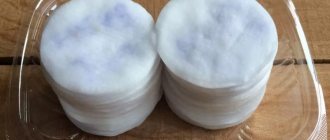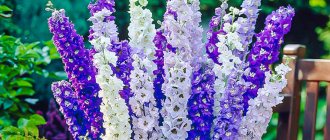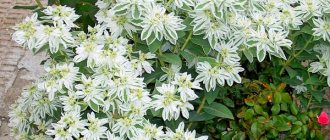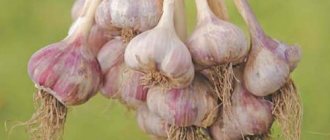Blue spruce is considered one of the most beautiful species of the pine family. In addition, many people associate it with their favorite New Year holidays. Therefore, landscape designers advise decorating urban and suburban areas with this tree. Since an evergreen perennial with blue needles is not a cheap pleasure, amateur gardeners grow it themselves. This option requires lower financial costs than purchasing grown seedlings. Let's figure out how to plant blue spruce seedlings.
Planting a seedling
The optimal time for planting blue spruce is March, April, when the soil has already thawed enough to dig it up. In order for the conifer to form a uniform, beautiful crown, it must be planted only in a well-lit area, otherwise it will not be possible to achieve a conical crown shape, and the color will not be so silver.
Spruce is not picky about soil; it can grow in sandy and heavy loamy soil. But slightly acidic loamy fertile soil will be optimal. On overly enriched soil, dwarf spruce grows and loses its crown shape.
Calcareous soil is not suitable for blue spruce. Before planting a seedling, such soil must be acidified with ammonium nitrate, ammonium chloride or ammonium sulfate. The main thing here is not to overdo it, because blue spruce will not take root in too acidic soil.
Before planting, peat, humus and sand are added to the soil from the hole, and drainage is made at the bottom. To do this, a layer of crushed stone, expanded clay or tiles is poured onto the bottom of a prepared hole with a depth of 0.6 and a diameter of 0.5 meters. This is important because blue spruce develops a shallow and shallow root system and does not easily tolerate stagnant water.
When planting several seedlings, it is necessary that there is a distance of about 2 meters between them. For the first time after planting, it is advisable not to loosen the soil within a radius of half a meter from the roots.
Reproduction of blue spruce
There are two options for propagating blue spruce:
- seed propagation;
- cuttings
Propagation by seeds is a simple method, but you will have to wait three years until the seedlings grow into full-fledged seedlings. Collect seeds with your own hands in October-November. The collected seeds must be disinfected with potassium permanganate. The soil mixture for sowing is prepared from peat with the addition of ammophosphate and limestone flour (20 grams of ammophosphate and 35 grams of flour per 5 kg of peat).
Sand is poured onto the bottom of a plastic container, then an earthen mixture and the seeds are sown to a depth of one and a half centimeters. In order to create conditions close to natural for the seeds, the container is placed on the refrigerator door; this procedure accelerates germination.
After three months, the container must be placed in a warm place and watered regularly. Shoots appear in about a week. At this time, you need to ensure that the seedlings do not rot from waterlogging.
In May, young plants can be planted on the site. It is better if the seedlings are covered for the first time (for example, with a plastic bottle, which also needs to be ventilated). Such a “greenhouse” will allow plants to adapt as quickly as possible. After a week, the cover can be removed.
You can read about planting and caring for garden hydrangea here.
If you want to learn how to plant and care for mock orange, you will find information about this in the article
The second method is cuttings. Cuttings are harvested in autumn or spring (autumn cuttings take longer to root than spring cuttings). To do this, cuttings fifteen to twenty centimeters long are cut from the upper part of the crown of a 5-8 year old plant and planted in a hole, at the bottom of which a drainage layer of 4-5 cm is previously poured, on top of which is 10 cm of nutritious soil and 5 cm of sand.
Pre-planting material must be treated with a solution of potassium permanganate. The cuttings are planted at an angle of 30 degrees and buried 4-5 cm in the soil, the distance between seedlings is 10 cm. At first, the seedlings must be shaded. By the end of summer (August), the shading can be removed.
Preparing cuttings: useful tips
The best time to take cuttings is May. The spruce emerges from hibernation and becomes saturated with juice and necessary substances. You should take branches from young trees no older than 10 years, so that the cuttings can better take root in their new location.
The optimal size of cuttings is 7-12 cm. They should have thickening of the wood at the base. It will prevent the resin from clogging the cells of the division and preventing the flow of moisture. To avoid damage, branches should be plucked rather than cut with a knife.
Harvest seedlings in the morning or in cloudy weather. Immediately place the branches in a plastic bag and replant them in soil, otherwise they may dry out. To stimulate growth, soak the cuttings in a rooting agent for 2 hours. The seedlings will take root after 1.5 months. Without the use of a stimulant, the process will take 3 months.
The best time to take cuttings is May (Photo used under standard license ©ogorodnye-shpargalki.ru)
Care
Spruce practically does not need fertilizers. On the contrary, their excess can lead to lignification of the lateral branches, which is why the tree will grow wider rather than upward. In addition, an overfed spruce will quickly turn from a miniature tree into a forest specimen. Feeding is required only for the first 5-7 years. To do this, use mineral fertilizer, which is applied in early spring.
It is prohibited to use fresh manure and nitrogenous fertilizers for feeding.
Blue spruce is very demanding when it comes to watering. One-year-old trees are watered 5-6 times a day in small portions. Since the root system of spruce is superficial, it simply will not absorb much water and the moisture will go into the ground.
In hot weather, adult plants need to be watered once a day (ten liters per plant). Watering should be carried out in the evening (after 18.00) and with warm water. Spruce also responds positively to spraying and sprinkling, during which the branches are cleaned of dust and become decorative.
To form a beautiful crown of blue spruce, pruning is necessary. First of all, dried and dead branches are removed, and then healthy branches are pruned. The formation of the crown must be completed before 8 years. In the future, it is better to give the tree the opportunity to form on its own.
Remember that the tool used for pruning must be sharpened, and the cut points themselves must be treated with a special solution.
Conditions for growth
An important step in growing blue spruce from seeds is stratification. This is the process of treating plant seeds with prolonged cold. The seeds are kept at temperatures from 0°C to +5°C for about three months in moist soil. In fact, this process lasts from the beginning of December to the end of February. After the container with seeds is kept in a room at room temperature. Blue spruce seedlings are susceptible to diseases, like any other seedlings. To prevent the death of seedlings, it is necessary to place them in a well-lit place, moisten the soil moderately and maintain the temperature at approximately 20°C.
Wintering blue spruce
An adult plant tolerates cold well and does not need additional protection. But small specimens can break under the weight of snow. To prevent this from happening, the branches must be tied with a rope or net, first raised to the trunk.
In early spring and on sunny winter days, a spruce tree located on the south side may get sunburned. You can avoid this by covering the tree with a cotton cloth.
Blue spruce
Preparing for winter
Spruce is frost-resistant and tolerates low temperatures well, so an adult tree does not require any preparation for winter.
Snow drifts, which can break off fragile branches, can pose a certain danger to young seedlings.
Therefore, it is recommended to cover the Christmas tree from snow by wrapping it with protective material, or lift the branches to the trunk and wrap them with soft rope.
Pests and diseases
Blue spruce is often affected by Hermes, the larvae of which are located in the form of thickenings on the shoots. Such shoots must be removed immediately and the tree treated with insecticides (fufanon, karbofos, rogor).
If spruce is damaged by stem pests (spruce sawfly), you can notice small (5 mm in diameter) grooves with resin on the trunk. Here it is necessary to treat with systemic insecticides.
If you notice traces of fungal infection on the conifer (browning of needles, wilting of shoots), then there are two options. The first (if there are several plants on the site) is to uproot the tree and burn it so that the infection does not spread to the rest of the conifers. The second (if there is only one spruce) is to treat the soil around the tree with Gamair, Fitosporin - m or Alirin - b.
You can read about how to plant and care for lilacs in this article.
Information on planting lawn grass and its further care can be found by clicking on the link.
This article will help you choose climbing plants for your garden.
The most balanced complexes
When choosing medications for conifers, you should give preference to products from proven and well-established manufacturers.
- Fertilizer "Khvoinka" is a complex product that stimulates the rapid growth and harmonious development of coniferous plants. The composition includes all important micro- and macroelements in an optimal ratio. Fertilizing is carried out with a solution prepared from 10 g of the drug and a bucket of water (per 1 sq. m of tree trunk circle). The product contains a fairly large amount of nitrogen (13%), so it is usually applied in spring or summer.
- Fertilizer for conifers “Fertile universal” is a preparation for comprehensive care of evergreen trees. Suitable for both basic application (at the planting stage) and for fertilizing during the phases of active growth and development of plants. Before planting, the drug is applied to the soil in an amount of 100-200 g per plant. For feeding during the growing season, 20-30 g of the substance are diluted in a bucket of water per 1 plant.
- Fertika Lux fertilizer is a mineral preparation specially designed for additional nutrition of conifers. The product is enriched with magnesium, which ensures health and rich color of pine needles. To fertilize the Christmas tree, dilute 20 g of the product in a bucket of water, and the resulting solution is used for 1 tree.
- Fertilizer “Zdraven turbo for conifers” is a mineral preparation for healthy growth and proper development of conifers. The product has a high nitrogen content (22%), so it is used for feeding spruce and blue spruce, pine and other similar crops in spring or summer. Fertilizer is applied under trees in the form of a solution prepared from 15-20 g of the product and 10 liters of water (per 1 plant).
- The drug "Aquarin" is a complex product for feeding coniferous plants with a minimum nitrogen content. This fertilizer can be applied throughout the growing season as needed. The trees are fed with a solution of 15-20 g of the product diluted in a bucket of clean water (for 1 plant).
- “Green Needle” is a mineral preparation with a high content of magnesium. It is used in the complex care of coniferous plants in order to improve their decorative qualities, as well as to prevent changes in the color of needles that develop due to lack of nutrition. It is applied twice during the growing season (in spring and autumn) by spreading it under trees and then incorporating it into the soil. The dosage of the drug is determined by the height of the plant (from 50 g for a tree below 4 m and up to 250 g for a tree above 8 m).
- Fertilizer for conifers "MicroMix" is a preparation with a specially selected composition that can fully meet the needs of conifers for basic chemical elements. Due to the low nitrogen content, fertilizing with this product can be carried out throughout the entire growing season (from spring to autumn). Trees are fertilized with a solution prepared from 15-20 g of the drug and 10 liters of water (per 1 m2 of tree trunk circle).
Types of blue spruce
Prickly or blue spruce has several varieties intended for cultivation for decorative purposes. Here are the most popular:
- Blue Diamonds (Blue Diamond). A plant with a thin trunk five to seven meters high and a conical crown. It is characterized by rather slow growth (up to 15 cm per year).
- Waldburn. It is distinguished by its small height (0.8 meters - maximum). As it grows, it can take the form of a small ball, the diameter of which is no more than a meter.
- Bialobok. Plant up to two meters tall with an uneven crown. Young shoots have a golden hue. Does not tolerate partial shade, because due to lack of light it may lose color.
- IseliFastigiata. A rather tall (up to 10 meters) plant with raised branches covered with thick needles. The plant is undemanding to soil, easily tolerates drought, but does not like waterlogging.
- Montgomery. The plant initially has a cushion-shaped crown, which becomes cone-shaped over time. It grows very slowly and reaches only 180 cm in height. Young shoots have a soft blue tint, while older shoots have a rich blue hue.
- Bonfire. Dutch variety of blue spruce. The trunk height is 10 meters, and the crown diameter can reach 3-4.5 meters. Young shoots are orange-brown in color, which looks quite unusual against the background of blue needles. Looks impressive in group plantings.
Blue spruce bialobok
How to understand that conifers do not have enough fertilizers?
Evergreen trees and shrubs indicate a lack of nutrition by changes in appearance.
| Sign | What element is missing? |
| Slowing or stopping growth, thinning branches, faded needles | Nitrogen |
| Yellowing and drying of needles, coloring of the crown in a golden hue | Magnesium |
| Fragility, yellowness of needles, later their browning and death | Potassium |
| Developmental delay, accompanied by shortening, curling and yellowing (browning) of needles | Phosphorus |
| Reduced frost and drought resistance | Bor |
| Excessive release of resin (especially at the base of the buds), death of the tips of the shoots | Calcium |
An acute shortage of any of the listed elements is extremely dangerous both for young spruce seedlings and for adult, fully formed conifers.
Weakening of plants due to insufficient supply of nutrients leads to a decrease in their protective forces, which, in turn, reduces resistance to diseases and unfavorable climatic conditions.
However, “overfeeding” is of little use for conifers, since excessive growth does not allow the plantings to prepare in a timely manner for the arrival of winter, which is why they may die in the cold.










